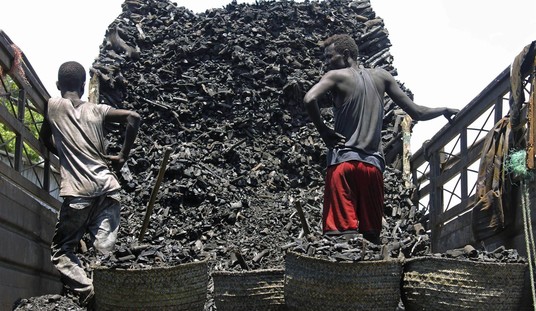NASA may have problems getting humans into space, but no one has ever questioned their ability to wow us with robotic probes to the planets.
The Curiosity is no exception. The car-sized rover will make a unique and risky landing inside a Martian crater later tonight and if all goes well, the most sophisticated experiments ever attempted by an unmanned probe will seek to answer some fundamental questions about Mars when it was wet, warmer, and possibly full of life.
This is what NASA was born to do; a one ton, $2.5 billion machine chock full of the latest gee-whiz scientific instruments has traveled 154 million miles to open a window on the universe and our place in it.
And it will do it by using a brand new landing procedure that NASA describes as “7 Minutes of Terror.”
http://www.youtube.com/watch?v=ISmWAyQxqqs
(Embedded video from NASA Jet Propulsion Laboratory California Institute of Technology)
The spacecraft is too large for conventional landings — it can’t bounce in an airbag to the surface as the most recent rovers Spirit and Opportunity did when they landed in January of 2004. Nor can it descend slowly to the surface using rocket engines. The fuel would have taken up far too much weight and scientific instruments would have been sacrificed in that kind of a landing.
Instead, Curiosity will come roaring into the Martian atmosphere at more than 13,000 MPH, and go through a complex series of maneuvers.
Protected by a massive insulating heat shield, the spacecraft and its computer will fire rocket thrusters to adjust the craft’s lift during the hypersonic phase of the descent, dipping or climbing as required and flying through broad S-turns to bleed off speed while keeping the craft on course for a pinpoint landing.
After slowing to around 1,000 mph, the craft will deploy a huge supersonic parachute, the heat shield will be jettisoned, and a sophisticated radar altimeter will begin sounding the surface. After the craft slows to less than 200 mph, the parachute will be jettisoned and Curiosity, bolted to the belly of a rocket-powered descent stage, will fall free for the final drop to the surface.
Unlike past landers, Curiosity’s jet pack doesn’t have legs. Instead, it will act like a flying crane, lowering the rover directly to the surface on the end of a 25-foot-long bridle as the “sky crane” slowly descends. When the flight computer senses “weight on wheels,” the bridle will be cut and Curiosity will be ready for initial tests and checkout.
Touchdown is expected at 10:17 p.m. PDT Sunday, but it will take radio signals confirming the event 13.8 minutes to cross the 154-million-mile gulf between Earth and Mars. That translates to 10:31 p.m. “Earth-received time.”
NASA is hoping that Curiosity rekindles some interest in the space program, lost when the Shuttle fleet was retired. It just might accomplish that if its super high tech instruments make the kinds of breakthrough discoveries about the Martian past that scientists are expecting.
Some of those instruments are truly remarkable:
Possibly the coolest Curiosity instrument is the ChemCam, which uses a laser beam to shoot rocks (and maybe a Martian or two) in order to vaporize a small sample. A spectrograph will then analyze the vapor, determining the composition and chemistry of the rocks. Situated on Curiosity’s head, ChemCam can shoot up to 23 feet and should provide unprecedented detail about minerals on the Martian surface.
The Chemistry and Mineralogy (CheMin) instrument will look at various minerals on the Martian surface. Specific minerals form in the presence or in the absence of water, revealing the history of an area and helping scientists to understand whether or not liquid existed there. Curiosity will drill into rocks to obtain samples for CheMin, pulverizing the material and transporting it into the instrument’s chamber. CheMin will then bombard the sample with X-rays to determine its composition.
[…]
The Sample Analysis at Mars (SAM) is one of the most important instruments and the reason that Curiosity can be called a mobile laboratory. Taking up more than half of the rover’s body, SAM contains equipment found in top-notch labs on Earth: a mass spectrometer to separate materials and identify elements, a gas chromatograph to vaporize soil and rocks and analyze them, and a laser spectrometer to measure the abundances of certain light elements such as carbon, oxygen, and nitrogen – chemicals typically associated with life. SAM will also look for organic compounds and methane, which may indicate life past or present on Mars.
The other experiment important in Curiosity’s search for Martian habitability is the Dynamic Albedo of Neutrons (DAN) instrument, which will look for water in or under the Martian surface. Water, both liquid and frozen, absorbs neutrons differently than other materials. DAN will be able to detect layers of water up to six feet below the surface and be sensitive to water content as low as one-tenth of a percent in Martian minerals.
What are the chances that the risky descent will succeed? NASA has lost 6 of 19 probes we’ve sent to Mars so by those numbers, there is a one in three chance for failure. Given the complexity and the new hardware being used during the descent, the odds are probably worse than that.
But if it works, the rover may answer some fundamental questions about Mars and our universe that man has been asking since the dawn of time.










Join the conversation as a VIP Member